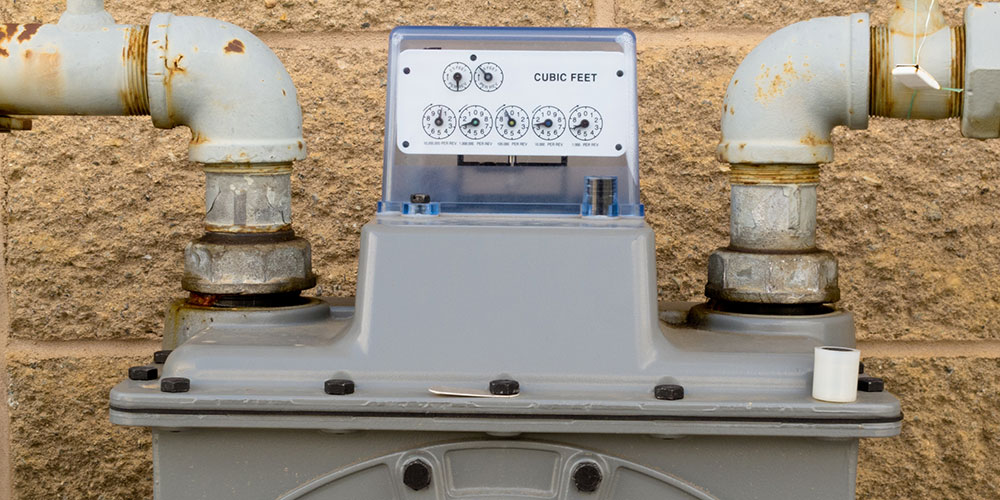Natural gas is more difficult to measure than energy and water. The volumes of gas measured are highly affected by pressure and temperature. Regardless of the pressurized quality or quantity of the gas going through the meter, gas meters measure a defined volume. Pressure, temperature, and heating value compensation must be taken into account in order to measure the actual amount and value of natural gas flowing through a meter. A few designs of gas meters are in use today, depending on the type of gas being measured, the range of flows anticipated, the volumetric flow rate of gas, and other factors.
From Diaphragm to Rotary Meters
When it comes to natural gas billing for domestic consumers, utility companies have traditionally used diaphragm meters to measure consumption. They would then charge their customers for their monthly gas energy bills based on the volumetric readings of these meters. This is because diaphragm meters self correct for temperature and operate in a very narrow pressure range. Utility companies use them as a trusted billing mechanism. In natural gas measurement, these meters have limitations.
Many medium and large-sized facilities require a different type of meter to cope with the higher volume. space restrictions also do not allow for large pipe diameters to maintain a low pressure that would allow diaphragm meters. To sub-meter their natural gas consumption and find ways to allocate their energy more efficiently; large users require Rotary type meters with external temperature and pressure compensation. Thermal Energy meters may also be used as accurate devices for sub-metering thermal energy (the results of the burned gas). However, they are unable to accurately translate for the composition changes inherent in a natural gas environment, nor can they be applied in all applications.
Natural gas sub-meters require pressure and temperature compensation when used to measure gas flow with variable operating temperature and pressure. The variations in temperature and pressure have an effect on gas density. Without this compensation, the flow measurement will be faulty and inaccurate.
PT Compensation
Pressure and temperature (PT) compensation converts a volumetric gas flow at specific conditions into an equivalent volumeteric flow at base conditions. The conversion factors are a simple ratio and, in essence, make a density correction. According to the ideal gas law (also known as the general gas equation), the moles of gas vary with temperature and pressure for a fixed volume. With PT compensation, there will be a constant that converts everything into the correct units. When a flow meter is measuring volumes of natural gas, the user wants to know the right amount of gas being used, regardless of the outside temperature or the pipe pressure.
The PT calculations are based on absolute temperature and pressure.
The gas meter is typically installed downstream of the pressure regulator and calibrated to read at that particular pressure. However, the varying temperatures cannot be handled that easily, which is why some meters are designed with built-in temperature compensation. It keeps them reasonably accurate over a wide temperature range, while others are electronically corrected for temperature.
Now that the compensation is done, the next problem is reading the meter. Most meters are equipped with pulsers. Pulsers generate a pulse for every turn of the dial on the meter, or are electronically generated from the compensator, these pulses are most commonly a contact closure switch. A single pulse is equivalent to a set amount of volume, the pulses travel over a cable to a Pulse data logger that counts (accumulates) the pulses and then transmits them to a receiver used for reading the meter.
Once all the pulses accumulated in a period the billing software can translate the pulses to actual gas volume that multiplied by the cost per volume unit generates the bill in the period.
There are other types of Gas meters, which are not common in sub-metering, and are more appropriate for utility billing. We will not cover them in this blog, but are listed here for those of you curious to learn more; These are; Turbine, Orifice and Ultrasonic meters.

